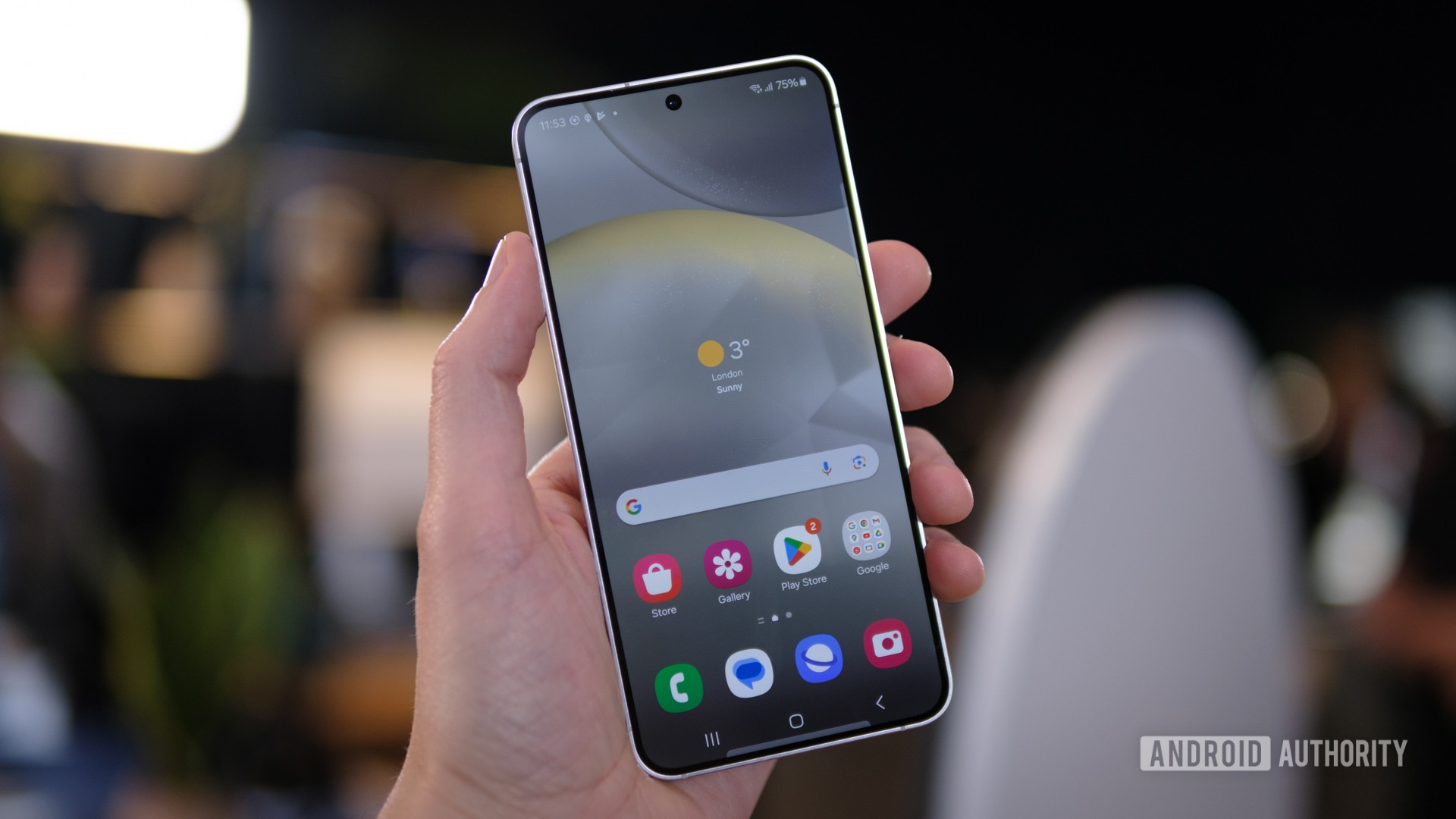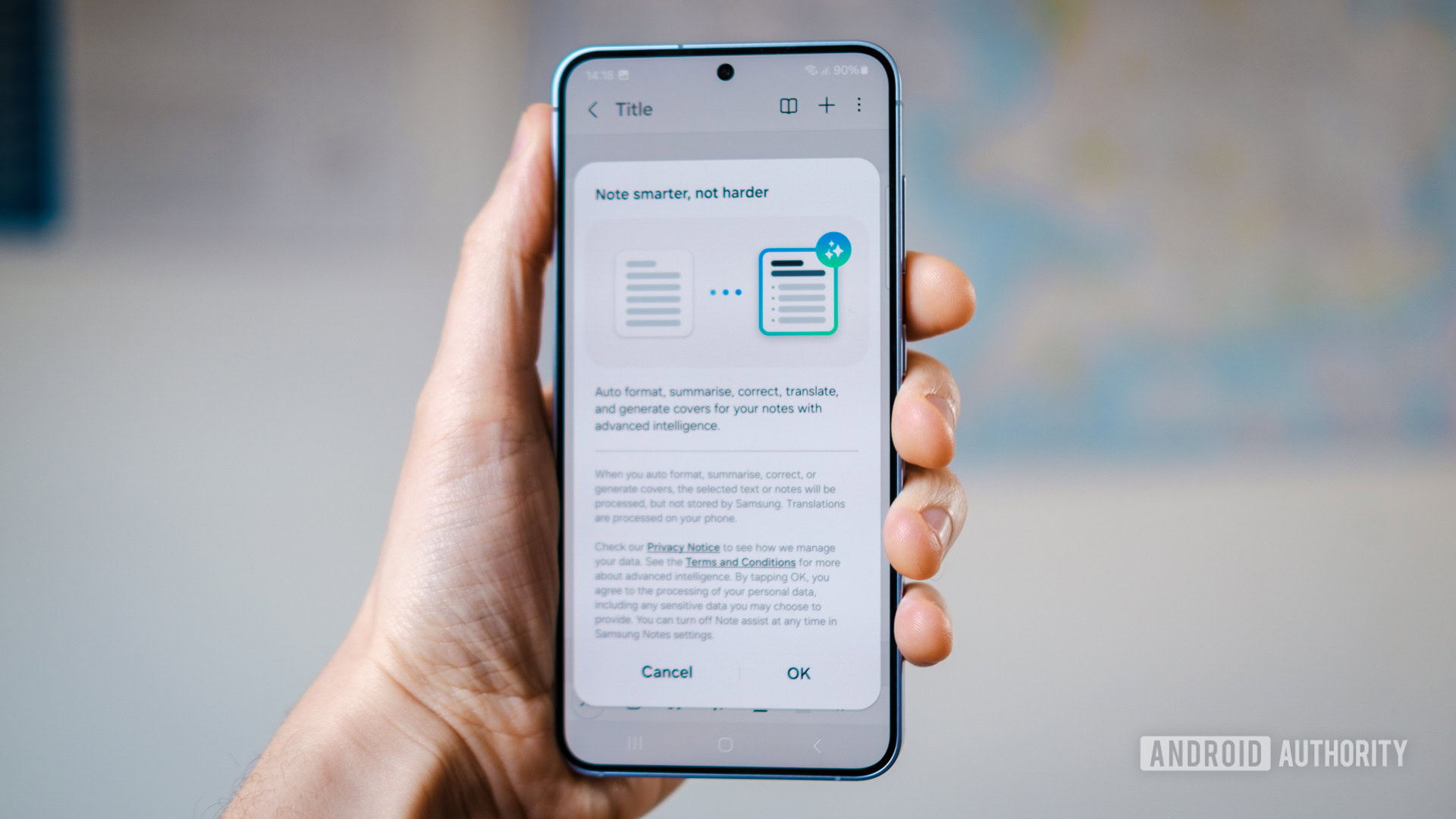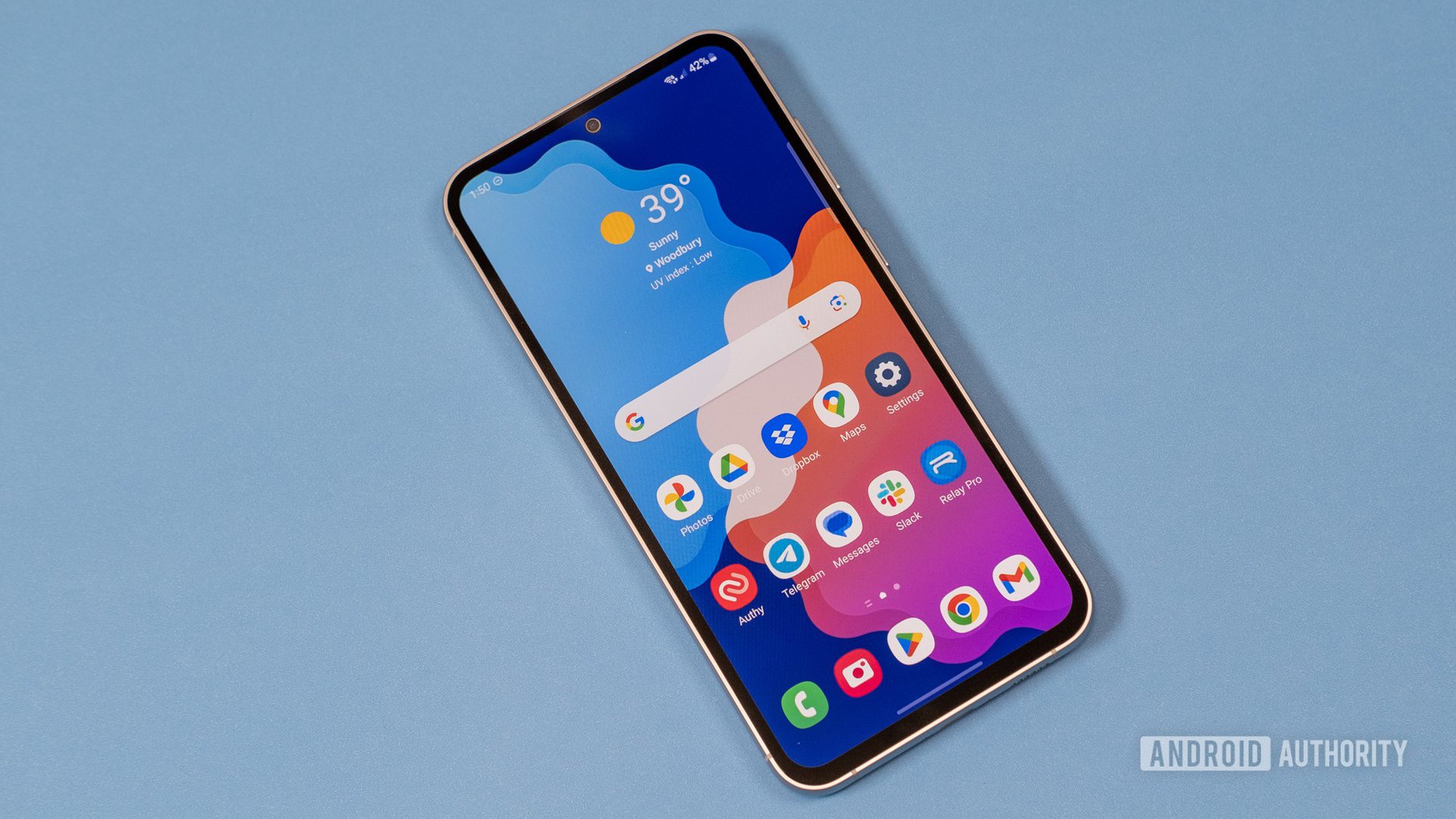Affiliate links on Android Authority may earn us a commission. Learn more.
Would a MediaTek-powered Galaxy S25 really be such a bad thing?

We’re still months out from the Samsung Galaxy S25 series, but rumors are already swirling (as they do) about what the phone will look like. One contentious area of discussion, as ever, is the chipset debate. Exynos vs Snapdragon might be put on ice next generation, as the rumor mill can’t its their mind up whether Samsung will go all-in on Qualcomm’s Snapdragon 8 Gen 4 or manage to manufacture sufficient in-house Exynos 2500s to ship both.
Either way, the chipset issue is shaping up to be an expensive one. Dubious yields from Samsung’s foundry will push up the cost of production, and the 8 Gen 4 is rumored to cost notably more than its predecessor — owing to both a custom CPU core and cutting-edge manufacturing process. Neither bodes well for the entry-level Galaxy S25’s price tag, and I’d hate to think about what the Ultra might cost. If only there was some other option to keep those prices down.
The Snapdragon 8 Gen 4 is rumored to be expensive and could further drive up flagship prices.
That solution could be MediaTek. It likely won’t be, but wild rumors suggest that Samsung is internally testing MediaTek processors as a third option for the Galaxy S25. Likewise, rumors hint that at least some models in the upcoming Galaxy Tab S10 line might feature MediaTek’s Dimensity 9300 Plus. I’d bet on the latter more than the former, but perhaps both are on the cards.
Of course, affordable Samsung phones, like the Samsung Galaxy A13 5G, already sport MediaTek hardware, so there’s precedent there. Furthermore, trial running a higher-end MediaTek chip in its tablet series, complete with AI, camera, and One UI tuning, could be a precursor to flagship smartphone debut. Just maybe, this could open the door to a wider range of processor options inside Samsung smartphones and help keep those prices from rising much higher than they have already. Would that really be such a bad thing?
Would you buy a MediaTek-powered Samsung Galaxy S25?
Although MediaTek chips might be cheaper (at least by a little bit), pricing is just one part of the puzzle. Hypothetically, moving to a different chipset means Samsung would want to ensure as much feature parity as possible with what it already has. Thankfully, the Galaxy Tab S10 series is expected to pack Galaxy AI in tablet form. While we don’t yet know exactly which features will land, MediaTek’s chips have long supported integrated NPU components to run AI on-device, just as Exynos, Snapdragon, and other mobile processors do. Important, Gemini Nano, the backbone to Galaxy AI, is supported too, right down to the brand’s mid-range Dimensity 8300. In theory, Samsung’s flagship AI features could be ported to the Dimensity 9300 or an upcoming new model and run well with a little development work.
Speaking of performance, MediaTek’s Dimensity lineup is plenty powerful. The range uses the latest Arm Cortex CPU components, just like Exynos, and its latest models actually sport more powerhouse cores than its rivals, giving it a minor edge in CPU workloads. Qualcomm is going its own way with custom Arm cores for the 8 Gen 4, which might elevate it to a slightly higher performance level. Still, the next-gen Arm Cortex X925 and its siblings look plenty potent for flagship devices.
MediaTek hardware has come a long way and is often at parity with competitors.
Graphics has always been a sore spot in the Exynos vs Snapdragon debate, and moving to MediaTek would mean more phones that don’t ship with Qualcomm’s Adreno graphics. Adreno has proven to be more powerful than the Arm Immortalis/Mali GPUs used in Exynos and Dimensity processors. Still, much of the world is fine with a slightly lower GPU performance point via Exynos, and Dimensity has regularly been in the same ballpark, if not marginally more powerful. Moving to MediaTek, at least in part, wouldn’t be a downgrade for global Galaxy gamers, but US customers might miss Adreno.

Of course, other features are a must, too, such as 5G networking. MediaTek has seemed hit and miss with network licensing issues in years gone by, but the arrival of 2022’s Motorola Edge, complete with 5G mmWave capabilities that worked in the US, suggests this is not a problem today. Likewise, this year’s Motorola Edge 40 is making its way to Europe and other parts of the world, complete with 5G technologies for those regions.
However, it is suspiciously absent from the US market, and we’ll have to see if these devices end up certified to run on notoriously picky networks like Verizon. Fortunately, MediaTek’s flagship Dimensity 9300 sports Wi-Fi 7 capabilities, just like its major rival, and Bluetooth 5.3. Clearly, the chip is well covered for networking smarts, though it doesn’t boast Qualcomm connectivity exclusives like aptX Lossless audio, Snapdragon Seamless, and others.
Long-term firmware updates, essential for prolonged software support, is another area in which MediaTek hasn’t always had the best reputation. However, that would be a requirement for Samsung, given its exception of seven years of OS and security updates. We haven’t seen MediaTek power anything quite that long-term, but 2023’s Xiaomi 13T series features two different Dimensity chips and offers four years of OS and five years of security updates. We’d need a further extension here, but ultra-long-term support could be within reach with a little effort.

MediaTek clearly packs in competitive hardware that wouldn’t be a major step back from what’s currently available in the Galaxy S line, particularly for global consumers, and might even be preferable to Exynos in some regards. However, we’d have to see how a Samsung/MediaTek partnership would bridge the networking and update unknowns.
Perception, though, might be the biggest barrier to Samsung ever adopting MediaTek chipsets for its Galaxy S line. After all, perception is part of the reason Samsung has continued with Exynos all these years — it helps to be seen in the same light as Apple and hedge against the Qualcomm monopoly. However unfair it might be, MediaTek is still seen as a lower quality, budget option compared to its rivals and could be judged as a step back for the Galaxy S brand, at least in Western markets. Adopting a chip seen in that light could hurt Samsung’s already fragile sales, so perhaps there’s too much at risk to contemplate such a move.
If perception is a problem, select markets and/or a new FE model could still benefit from cheaper pricing.
Still, Samsung could likely strike a good price with MediaTek, and there are markets where perception might not be such an issue. The EU, India, and South East Asia, which already use Exynos as part of Samsung’s current dual chipset strategy, might not mind so much. They’re already used to some pared-back performance compared with Snapdragon versions, and MediaTek could hold appeal if it keeps the phones competitive with Chinese rivals that are more abundant in these regions.
Perhaps the best place to test the waters with a MediaTek chipset would be the more affordable Galaxy FE series, where small trade-offs are already accepted, even preferred, in pursuit of a lower price tag. A Galaxy S25 FE that launched alongside or shortly after the S25 series, complete with Galaxy AI but at a more affordable price, would undoubtedly be an interesting product. I’d be very surprised if this comes to pass, but I suppose anything is possible when profits are on the line and, to be honest, I’d be very interested to see it.